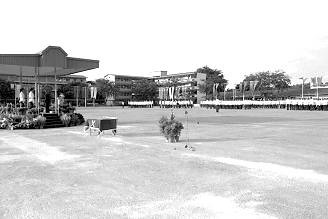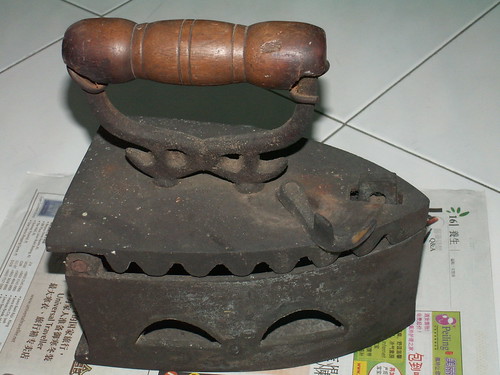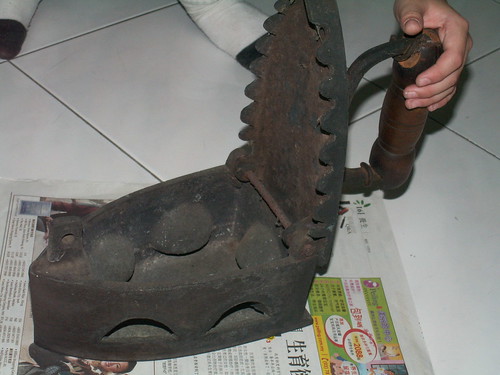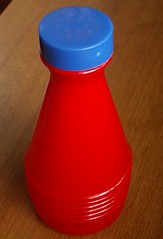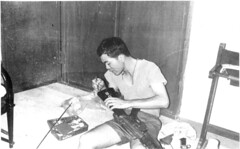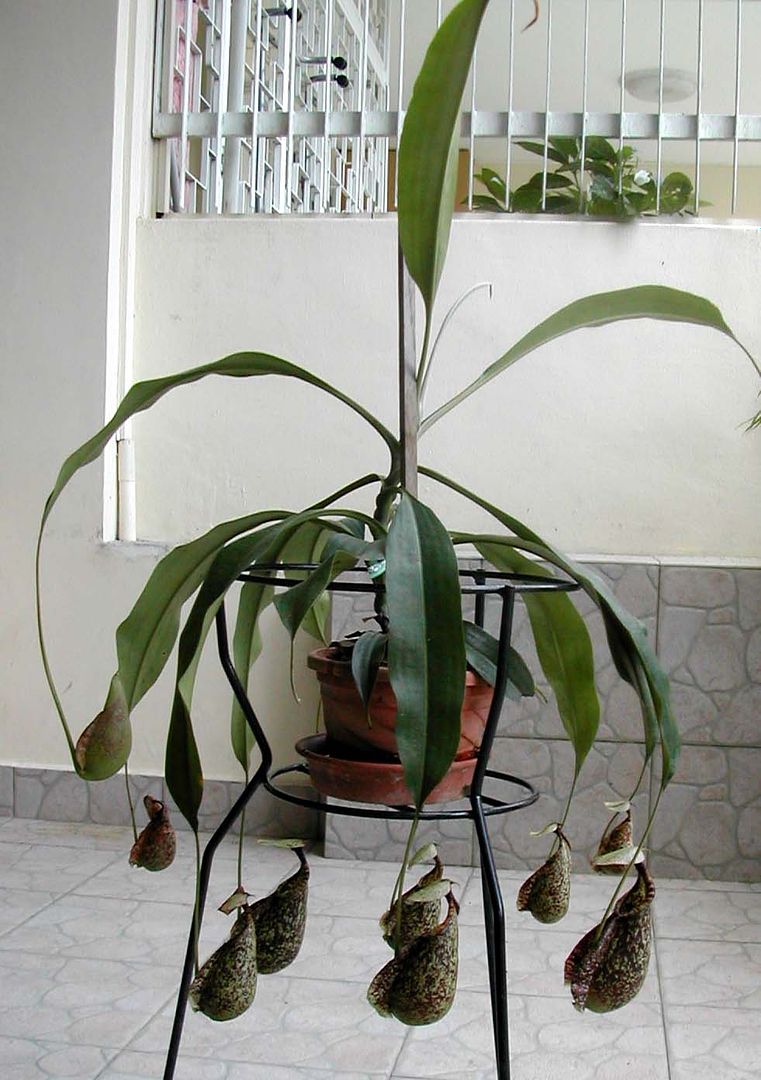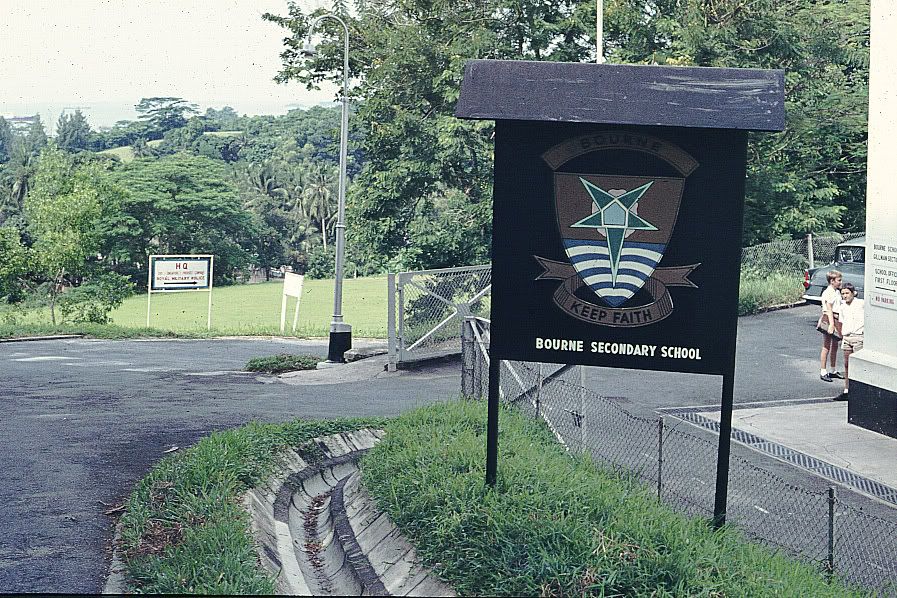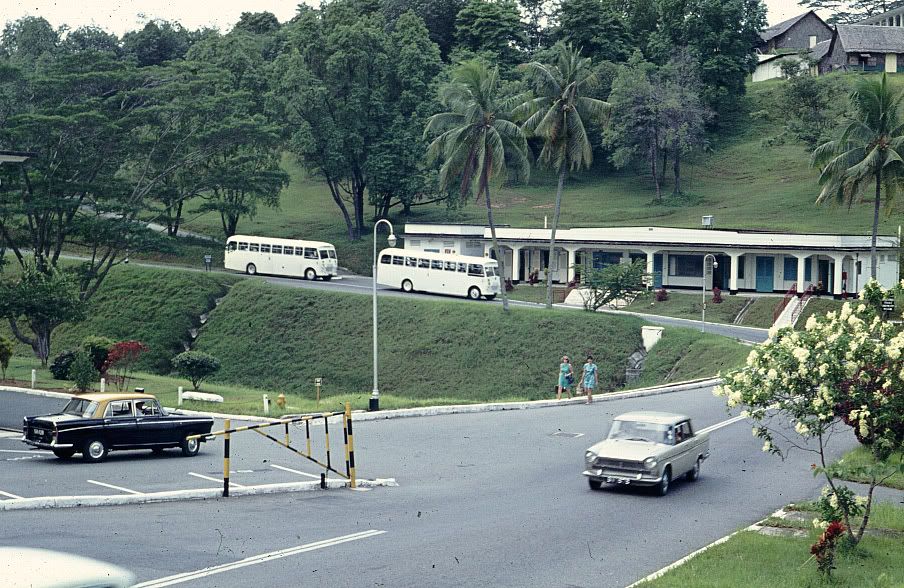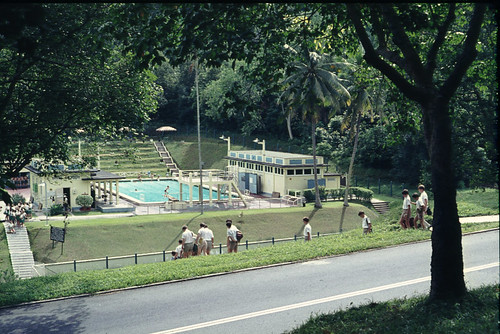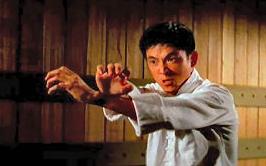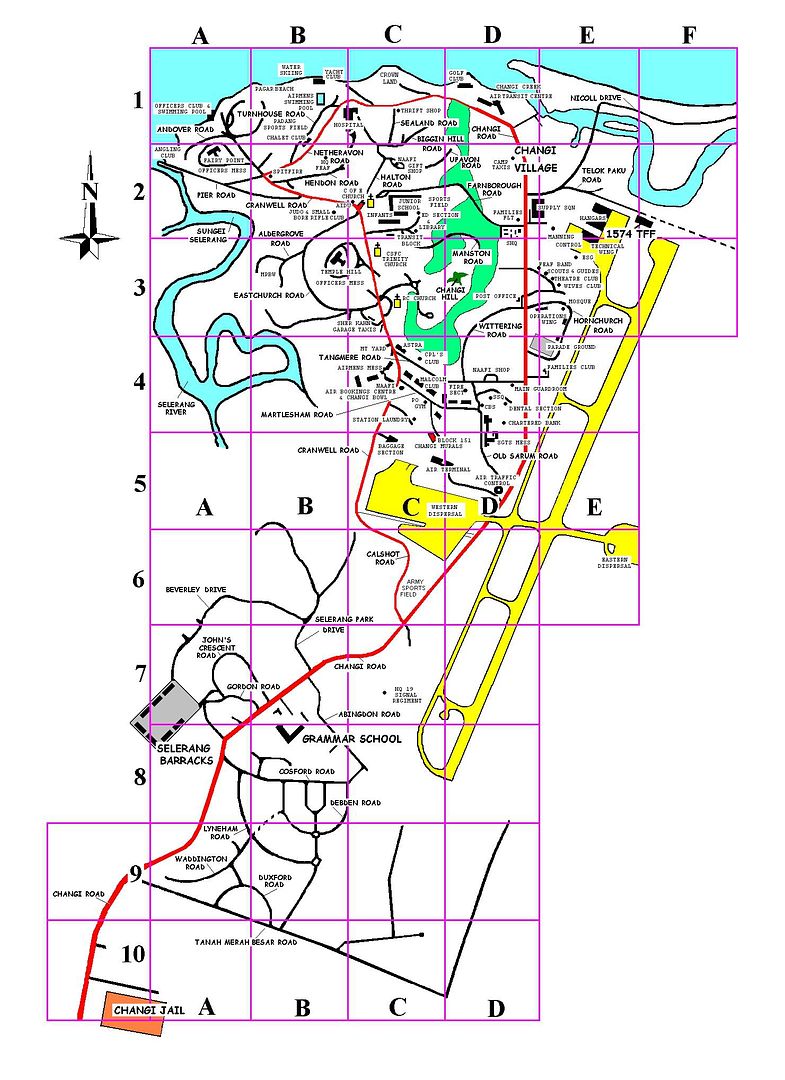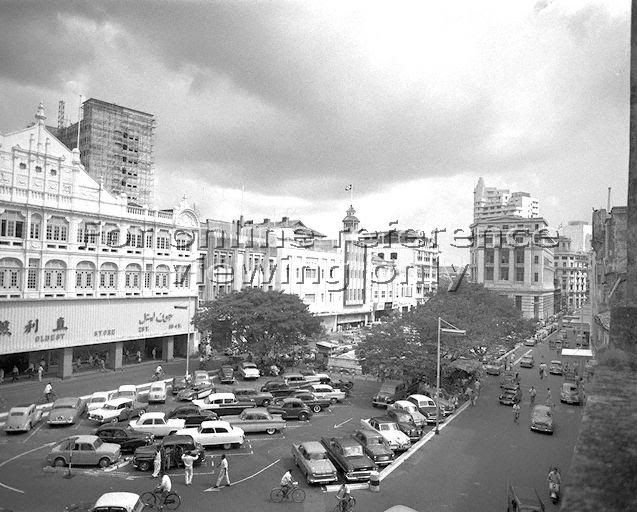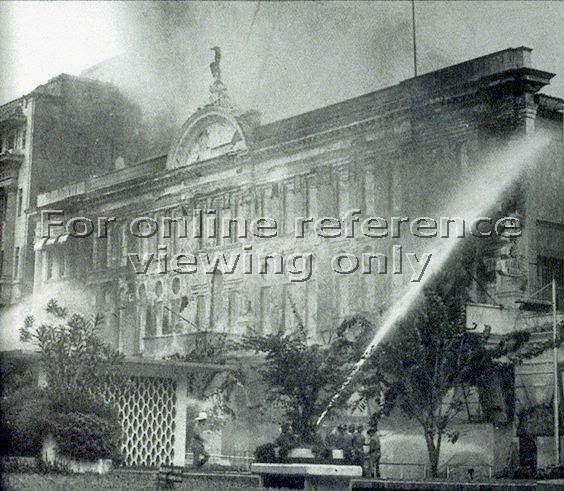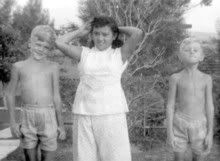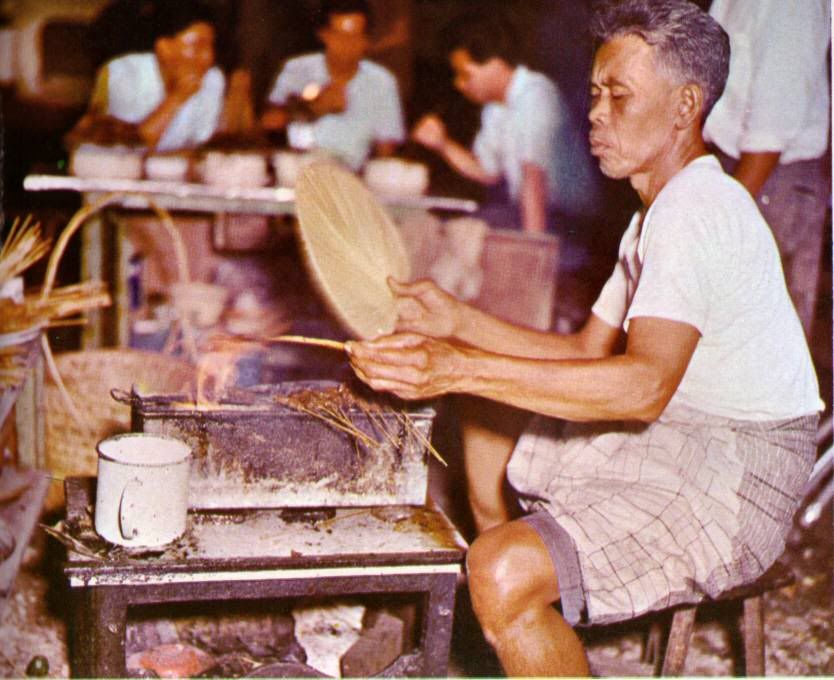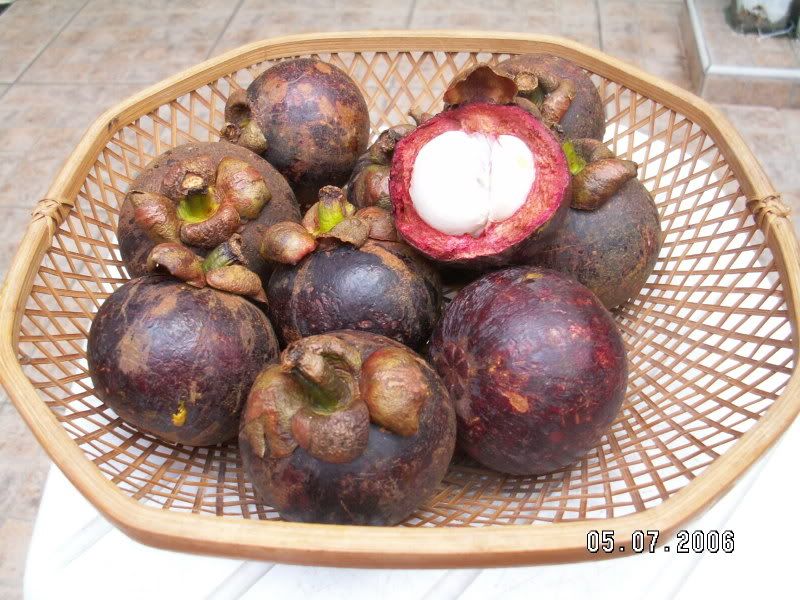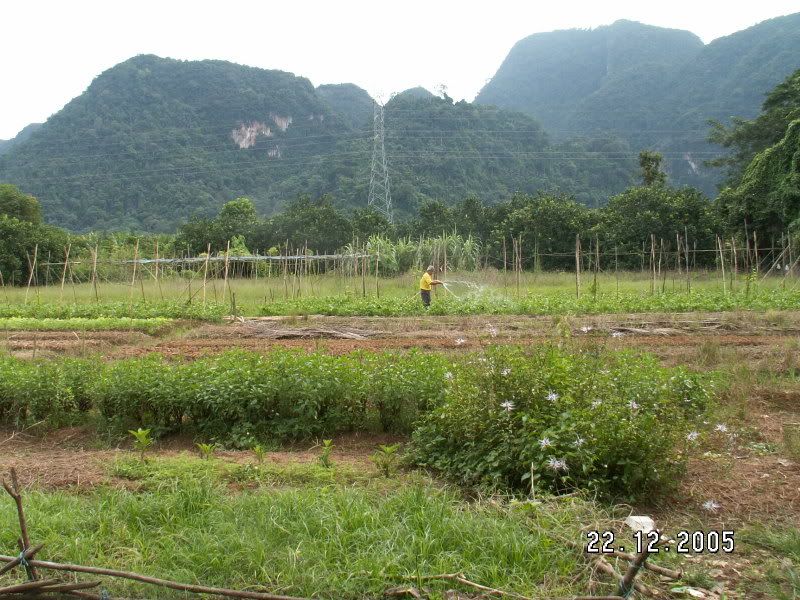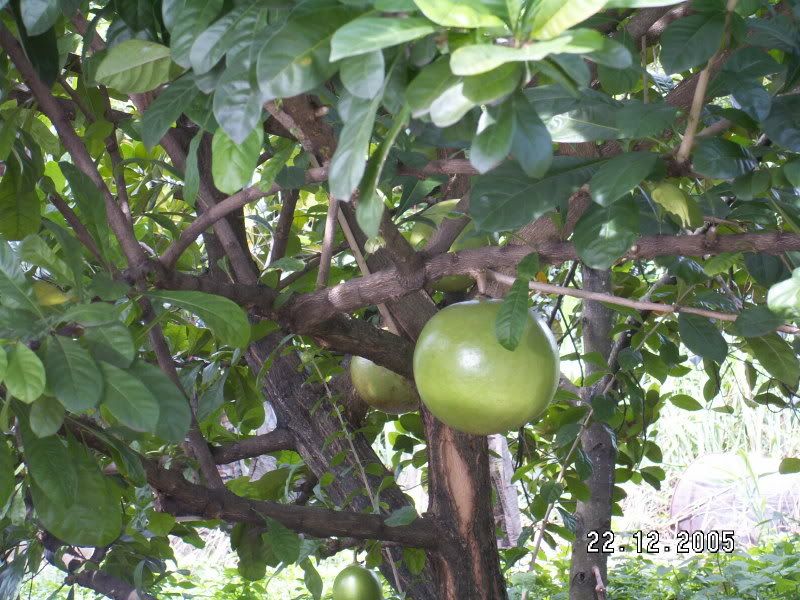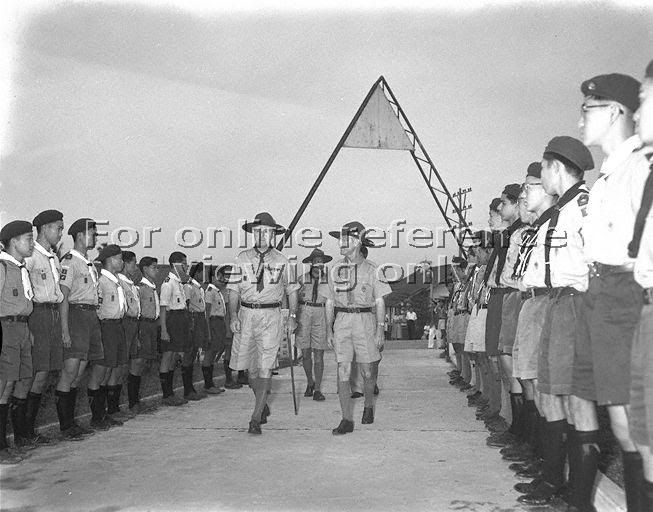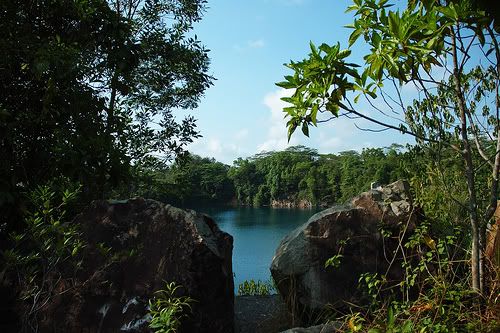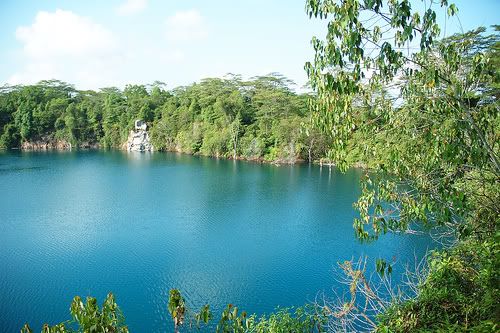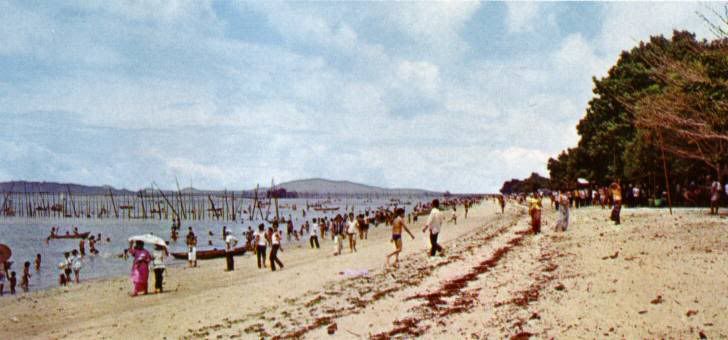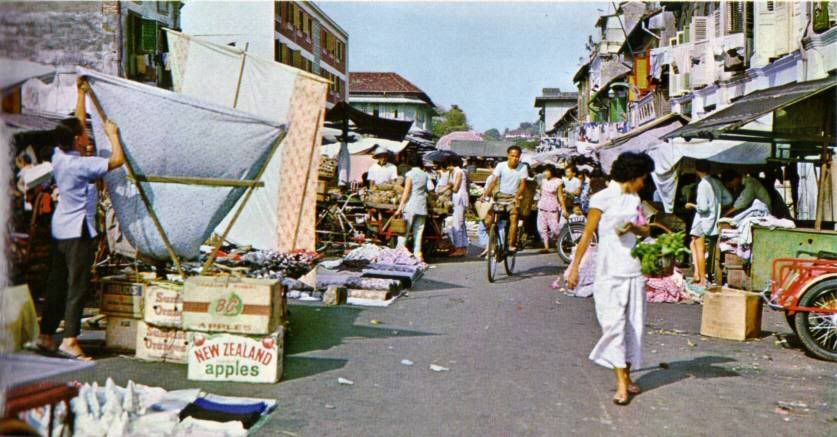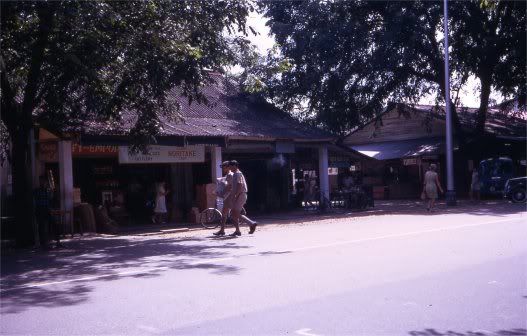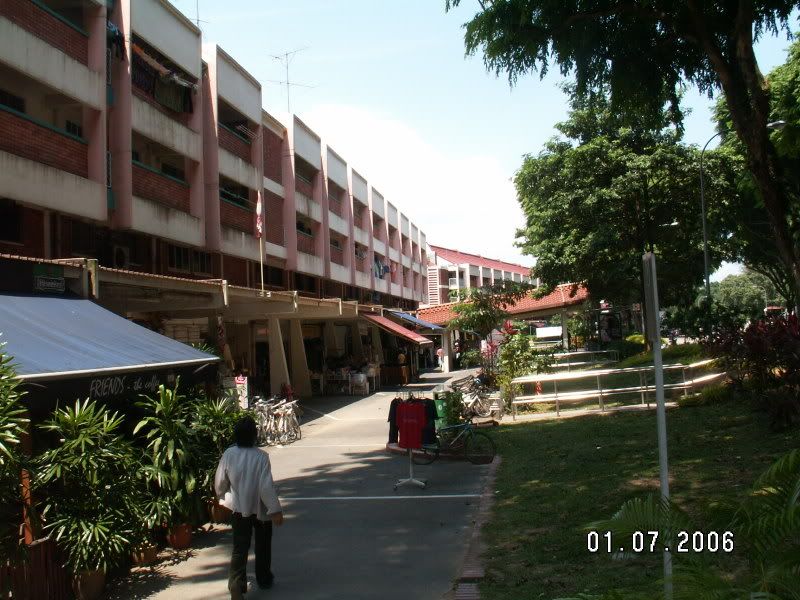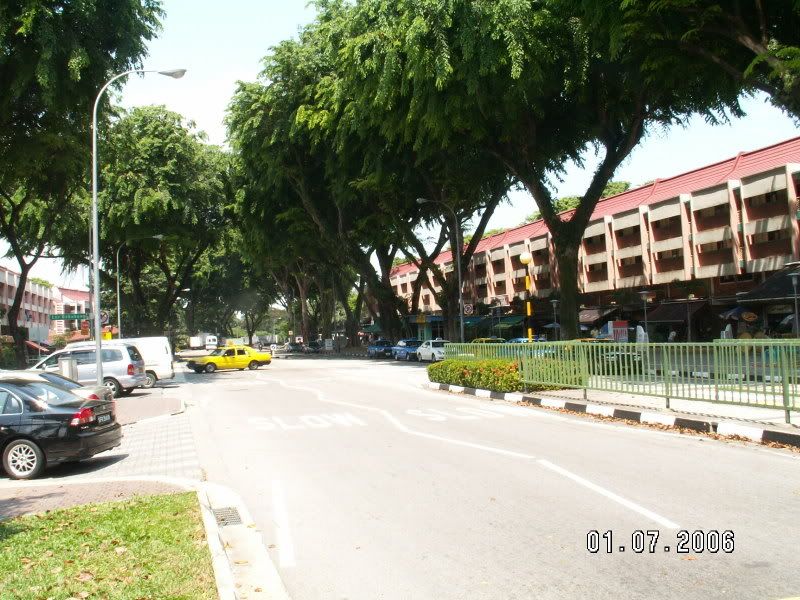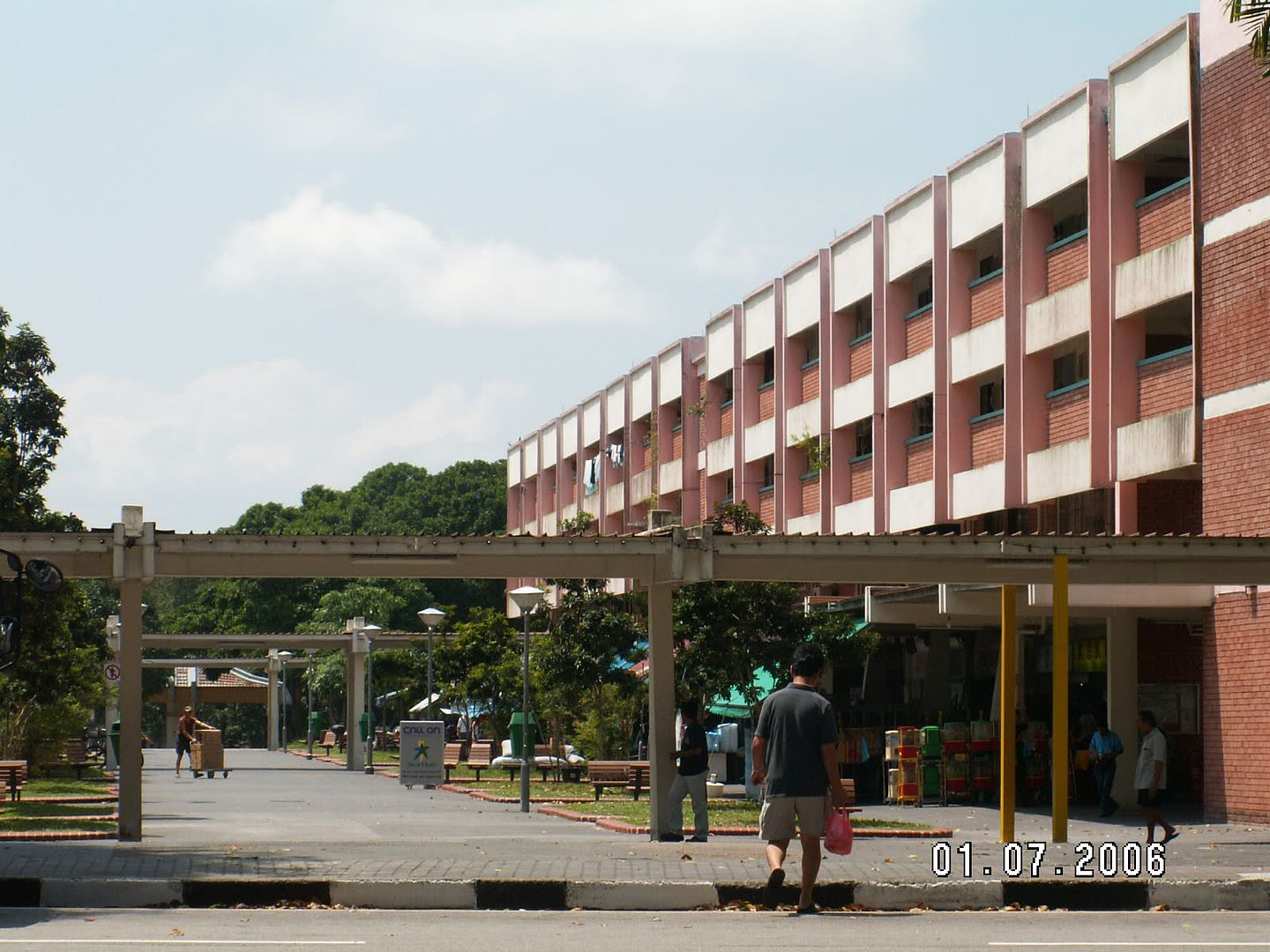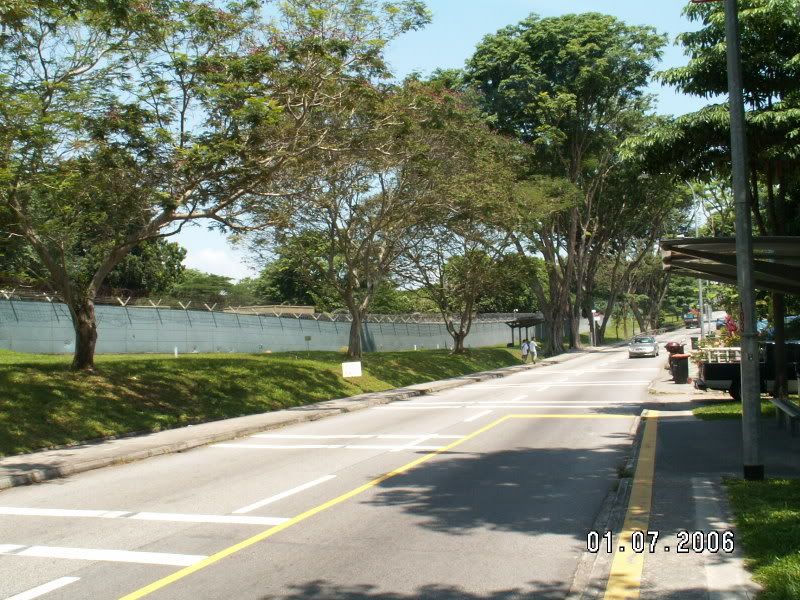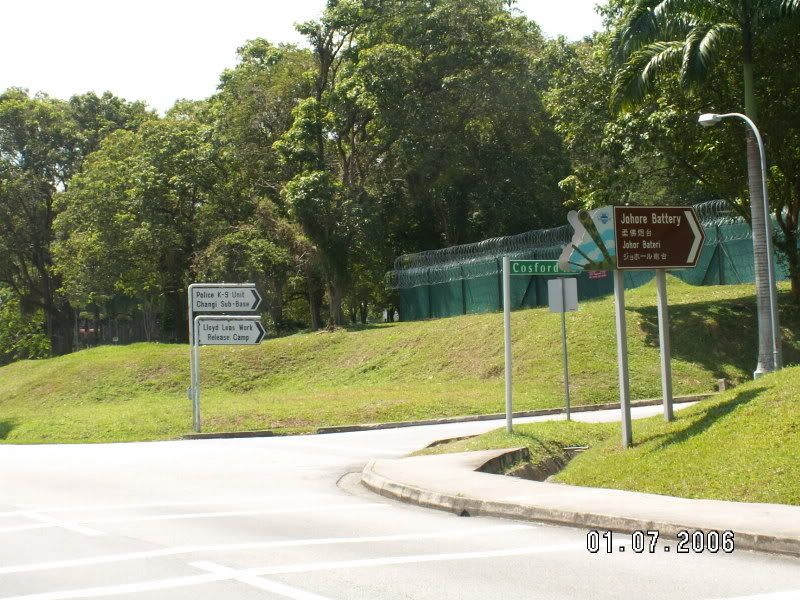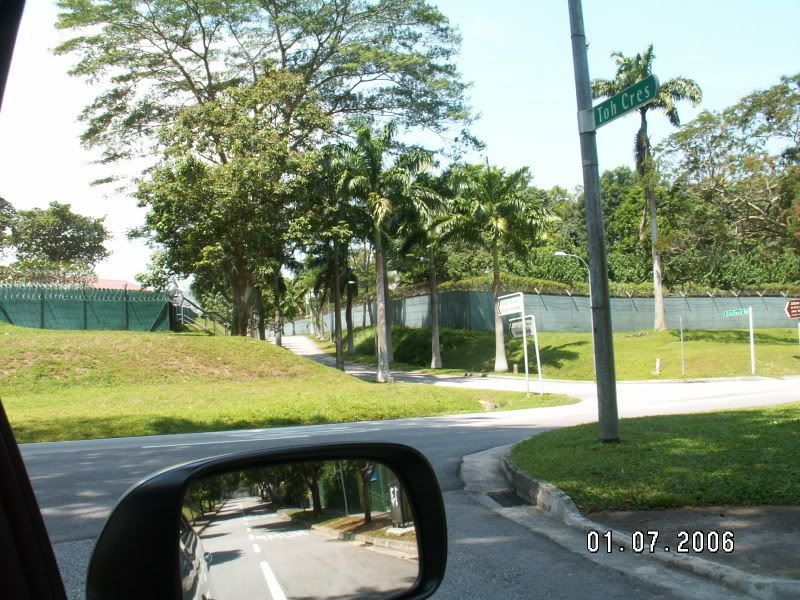My First Platoon Commander
My first PC when I was drafted into SBMT (School of Basic Military Training) in Safti in 1971, was a Lieutenant Thing. On the first night after we had ‘checked in’, he came to check on how we were doing and introduced himself. He was dressed in all white PT kit and looked quite dashing. Those days, only officers were allowed to wear white PT kits. He told us that he too was a national serviceman and had graduated from Nantah before he was enlisted. He was with us for only a short while before he completed his NS.
I met him again about 10 years ago when I did some work for the Corrugated Box Manufacturers Association of Singapore. He had become a wealthy businessman running a string of carton box factories, the largest being the Far East Packaging Group, and one of the association’s management committee members.
My Second Platoon Commander
My next platoon commander was 2LT Neo Keng Kok. Unlike Thing Chiang Ching, he was a ‘tan-chia’ or regular soldier. Although he was not highly educated, he was a real professional and we had great respect for him. He was also very fit physically. Whenever we went for runs, he would shoulder the rifles of those of our platoon trainees who were having difficulty. Try to picture it – an officer shouldering 3 or 4 rifles running alongside his men. This was one feat I was not able to emulate when I became a platoon commander.
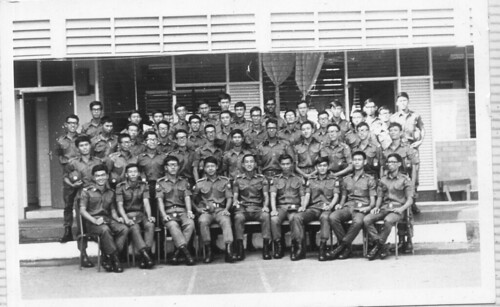
Platoon Photo. I am seated in front row extreme left. 2LT Neo is seated in the centre. On his left is our section commander – but I cannot recall name.
2LT Neo seemed to like me. I remember one interesting incident when our company was assigned to do ‘fatigue’ work along the ‘long and winding road’ leading to the ‘Boatshed’ on the western coast of Singapore. Earlier, there was a fatal accident involving a land rover at one of the sharp bends. So we were tasked to improve the road by building an embankment with sandbags. As we broke for lunch and rested by the side of a hill, I was punished by one of the corporals. I cannot remember what the offence was, but it was not over food or drinks as what my friend Ivan, the Rambling Librarian, may think. He asked me to run up one of the steep hills. 2LT Neo probably disapproved (看不过眼) of his bullying tactics, but he didn’t want to contravene his subordinate’s orders. So he said, “And Cpl So-and-so will race you up the hill and back.” So the Cpl who punished me ended up being punished himself, and that was one occasion when I actually enjoyed my punishment.
2LT Neo continued to be our PC when we progressed from BMT to Section Leaders Course. But towards the end of our course, he left us to join the newly set up Commando Training School which was located just behind our company lines. Occasionally, we saw him and his buddies being ‘tekaned’ by the tough commando trainers and found it quite amusing.
The last time I met him was when I was an officer cadet in Safti’s Officer Cadet School a few years later, after I completed my university education. He was holding a captain’s rank and was on DFO duty in the cookhouse. Looking every inch a professional soldier with his red beret, he loudly called out; “Recruit Lam Chun See; Platoon xx, Lima Coy”, when he spotted me. I felt quite honoured that he could remember me.
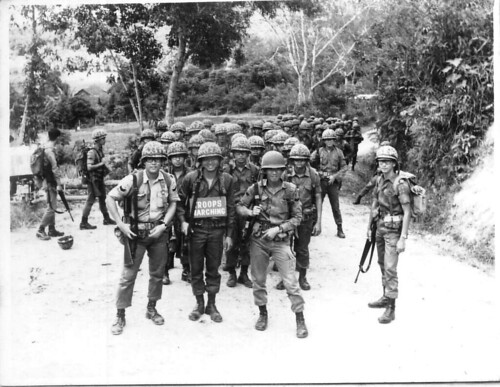
This photo was taken during route march. The place is somewhere behind the Nanyang University Campus. Me looking like a clown with the Troops Marching sign hung around my neck. I had to walk far in front of the rest of the company to stop the traffic.
Disper or you will disper by force
Regular officers in the early days of SAF were usually not highly educated. So we used to be quite amused by the way they mispronounced certain English words. One particularly funny line was “Disperse or you will be dispersed by force” which the officers loudly hailed when conducting what was called IS Operations training. IS stood for Internal Security, and we were being trained to disperse rioters. We had to put on our smartest No. 3 uniforms and metal studded boots with bayonets fixed to our rifles for this training. When the command was given, we had to yell “HA!” in unison.
Although it all appeared rather silly to us at that time, I appreciated it because I have experienced the calming effect of seeing such soldiers patrolling the streets outside the National Junior College in 1969. This was during the time of the May 69 racial riots in Malaysia. Apparently, some thugs in Singapore wanted to stir up racial trouble, and so the SAF soldiers were out in a display of force. It was quite comforting to see and hear them marching in their metal-studded boots.
毕伟星
In OCS, my section instructor was a young second lieutenant by the name of Bilveer Singh. I said young because, strangely, he was the youngest in our section. This was because most of us were university or polytechnic graduates who did NS after completing our tertiary education. Some were ‘disrupted’ cases like me. Others were regulars who had already several years of experience in the army.
He was given the above Chinese name when we went to Taiwan for training. He became friend to some of us after our OCS training. We told him stories of university life as he was headed for the University of Singapore after his NS.
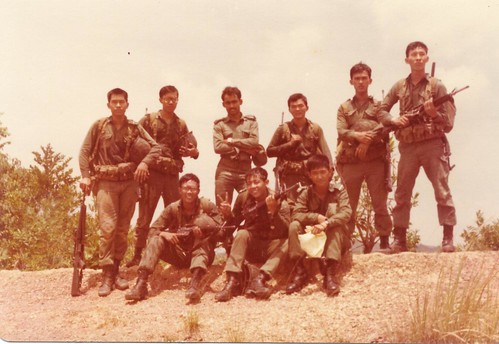
This is a photo of our section. Our section instructor, 2LT Bilveer Singh is standing 3rd from left (he was a ‘modern Singh’ and hence didn’t wear a turban) with me to his left. He made us charge up a hill before taking this photo saying it would look more ‘realistic’ if we were all sweaty and tired looking. This photo was taken in the Safti training area somewhere between Safti and Nanyang University.
A**hole Chan
Coincidentally, my platoon commander in OCS was also a commando. We nicknamed him A**hole Chan not because he was a jerk, but because he liked to use that obscene word.
Lta Chan, didn’t believe in silly punishments like extra drills and stand-by-beds or petty regulations. His main emphasis was on fitness and combat training. There was one occasion when our platoon was punished by our company 2IC to do ‘extra drill’ at night. Half way through, he got fed up and made us practise battle formations instead. It felt really funny doing this type of training, which was usually carried out in the field, in our smart No. 3’s right there in the middle of Safti parade square.
On another occasion, we were returning to our barracks after demolition live firing training. Some of our ‘unlucky’ platoon mates were assigned stores duty, meaning they had to carry the stores back to company lines a few km away. Mind you this was at the end of a tiring day of training. Our platoon IC then ordered the rest of the platoon to fall in and ‘high-port’. That was one word we hated because it usually meant we had to get ready to run and not march. Those days, the standing order was that we had to ‘double’ (run) and not march from point to point. This was to train up our stamina and prepare us for Exercise Starlight in Taiwan, the culmination of our 9 months of officer cadet training. We were so happy when we finally approached the gates of Safti. But our hearts sank when instead of the command ‘kiri belo’ which meant turning left into the Safti compound, our PC ordered us to continue running. And so we plodded on waiting for the order to turn back which never came until we reached all the way to Tuas! Boy, if we had known this would happen, we would have gladly volunteered for stores duty. I reckon that on that occasion, he broke at least 2 safety regulations. Firstly, for any running that exceeded 5 km, we are not supposed to put on steel helmets but only the inner liner (made of fibre glass I think). Secondly, no running was allowed on the main roads.
Staff Rahman
In OCS, our platoon sergeant major was a staff sergeant called Encik Rahman. We all liked him very much as he was patient and gentle – a far cry from the SSG Royston that I knew from 1971. His favourite line was, “Don’t always say say but never do.” Staff Rahman was probably a body builder. One day we discovered how strong he was when he turned out to be the only one who was able to unfasten a stuck rifle muzzle after all of us had tried unsuccessfully.
The last time I met him was probably was about 15 years ago. I met him at the National University Hospital lobby where he was working as a security officer.
Educated Idiots
There were 3 companies in OCS; Alpha, Bravo and Charlie. My company, Charlie Company was the most fortunate. Practically all our commanders and instructors; our OC, CSM, platoon commanders, section instructors, right down to platoon sergeant majors, were very ‘nice guys’ compared to those in the other 2 companies. As such our friends in A and B, who seemed to be receiving punishment all the time, really envied us. The only exception was our company 2IC, a two-pip lieutenant by the name of Toh Peng Woo. He was the nastiest but also the most colourful. We all thought he was crazy and so we nicknamed him ‘toh peng’ which was Hokkien for upside-down. He especially disliked my platoon which consisted mostly of university and polytechnic graduates. He called us ‘educated idiots’.
I remember one occasion when we had defense camp on one of the hills. I was holding the appointment of platoon sergeant. At midnight, he came to inspect our trenches and he issued me this command; “Platoon sergeant. Fall in the men for a screwing session!” So there we were; twenty over ‘educated idiots’ with all sorts of degrees and diplomas after our names being ‘screwed’ by a crazy man with probably 3 O-levels on Hill 265 at 1 am at night. Next morning, this poor platoon sergeant kena another round of lashing by the toh peng commander. That was the first and only time in my life I experienced obscenities being hurled at me from a distance of only inches from my face. I tried to concentrate on my reflection in his sun glasses and ignore the showers of saliva.
The last time I met him was in the late 1980’s. I was a trainer in the National Productivity Board, and he was a trainee in one of our diploma courses. I think at that time, the SAF was fast replacing its older officers with scholars of all shapes and sizes. Too bad my specialty was Industrial Engineering and not Business Administration.
Ah …
Those were the days my friend,
We thought they’d never end ….…

